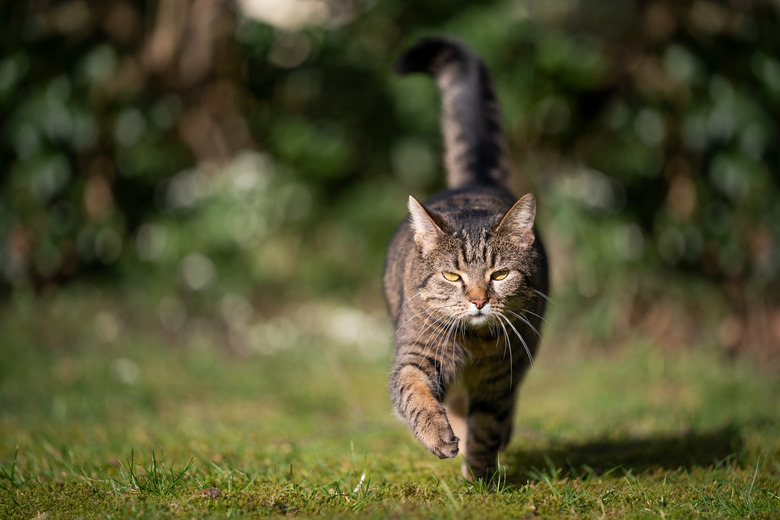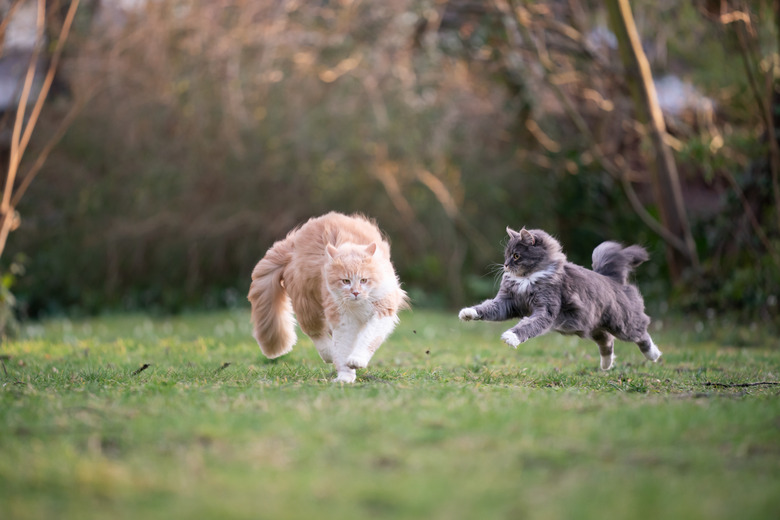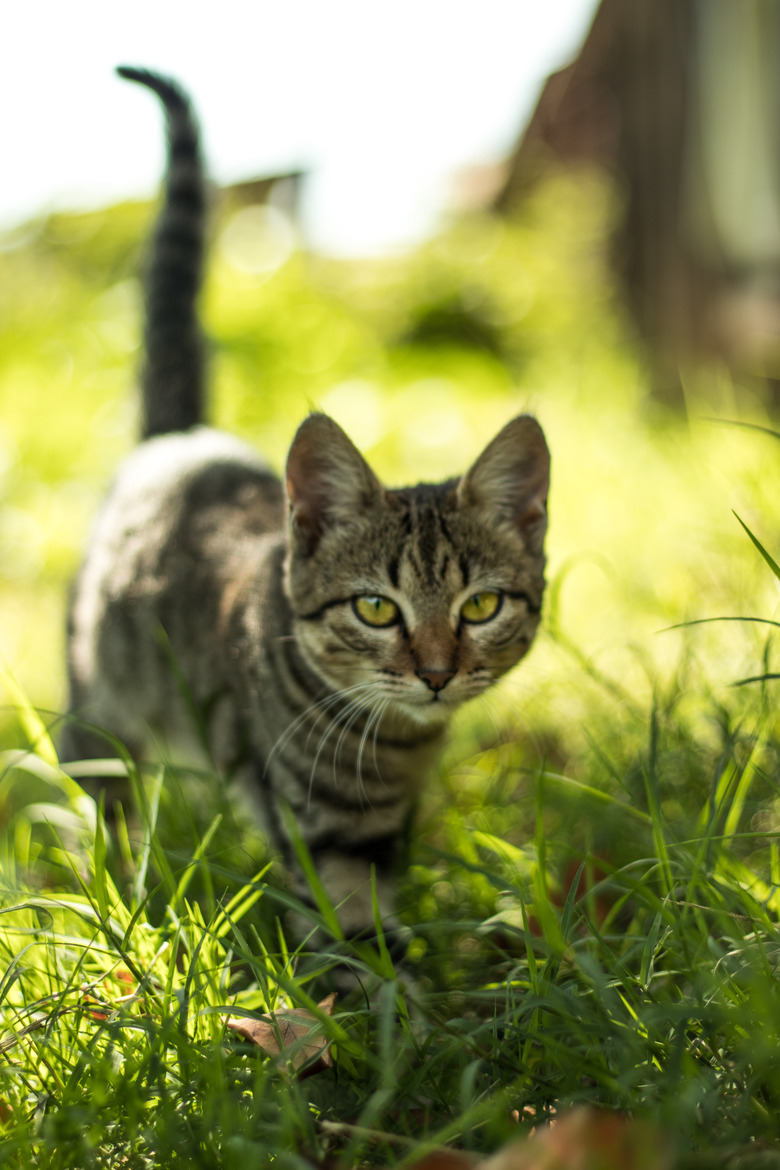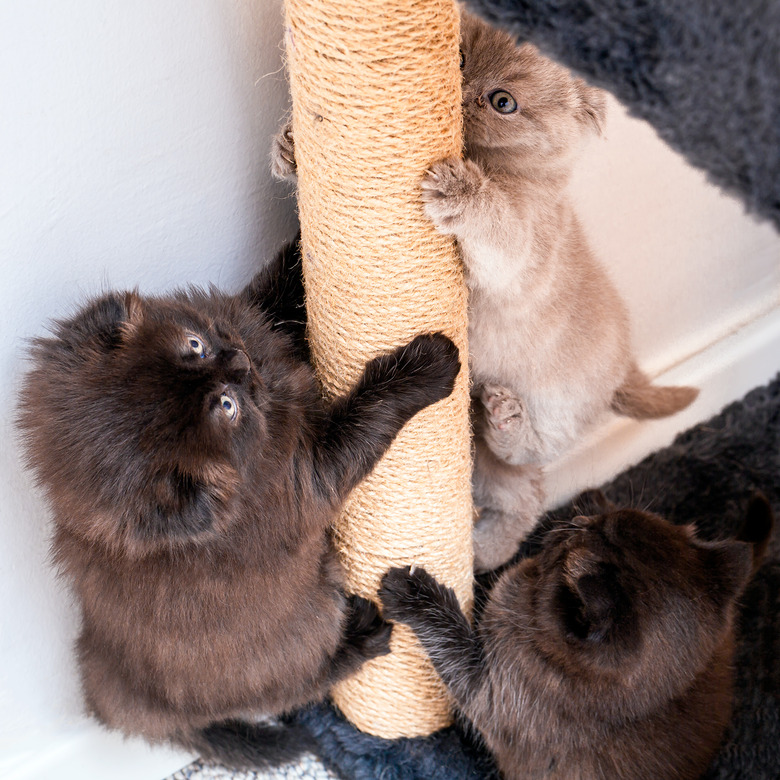How Do Cats Walk?
When humans walk, we don't have many ways to do it. With only two legs, we have to simply put one foot in front of the other. But animals like cats that have four legs can walk in different ways...including between your legs when you don't want them to!
Some animals, like cats, camels, and giraffes, walk with two right and two left legs, with two legs moving at the same time. A four-legged animal like a horse, however, walks with only one leg off the ground at the same time. Cats have other interesting things about the way they move, including a large number of bones that help them move different parts of their body independently.
How do cats walk?
How do cats walk?
While cats walk with four beats, meaning that each paw touches the ground at a distinct time, there are still usually at least two feet on the ground at any time. Researchers call it a four-beat-gait, because each foot leaves and strikes the ground at different times. There is no particular order of one leg starting the walk motion over another leg.
Quadruped animals have different gaits. In a walk, the legs move diagonally, starting with one of the front legs and the opposite hind leg moving in unison. When a cat walks, it can almost look like a single file of tracks because the hind foot can go into nearly the exact space as the front paw print. Some cats even like to be walked on a leash, although it can take some training to get them used to it.
The "rapid walking" gait keeps two or three feet on the ground at the same time. A "slow walk," on the other hand, may keep three or even four feet on the ground at the same time. A rapid walk is described as symmetric, because the left limbs repeat the position of the right, one half stride later.
Trotting and running
Trotting and running
A trot is a two-beat gait, with the cat moving quickly to get from one place to another. Diagonally opposite paws touch the ground simultaneously. A canter is not quite a run but faster than a trot. This one is a three-beat gait with at least one paw always contacting the ground. The last paw to touch down is placed in advance of the other paws, and is called the "lead leg." The cat can use any leg as the lead leg.
The run is the fastest gait. In some phases of a run, there may be no paws touching the ground at all. At a full run, the hind legs propel the body forward with all four feet simultaneously in the air. It happens in a split second, but one front leg lands just before the others do, and when the back legs touch down, the body is propelled forward again.
Cats have 517 muscles
Cats have 517 muscles
That "wiggle" you see of a cat's front end steady while the back tail and rump swishes a little when a cat is stalking its prey can happen thanks to a huge number of muscles enabling them to move the front and rear halves of their bodies in opposite directions.
Cats lack a "shoulder blade" bone like humans have, so they can move their forelegs in almost any direction. While a human has 206 bones in our entire body, a cat has around 290 bones and 517 separate muscles. The majority of those muscles are used to jump and run in a highly efficient manner. A cat can jump over 7 times its own height.
Cat walking form
Cat walking form
A cat's front legs are more flexible than a cat's back legs. A cat's front legs carry approximately 60 percent of a cat's body weight. A cat walks on its toes, which means the fleshy, hairless pads on the bottom of its paws. This is called the digitigrade posture, and it enables the quick, quiet movements that lets cats pounds and quickly move from sitting or standing to a run.
Kittens climbing
Kittens climbing
If you've ever had the pleasure of watching a litter of kittens try to find their way out of their box, you might know that once a kitten is able to support its full body weight, it starts to change a lot.
Kittens will begin to approach people at about 18 days of age, and even earlier if they are used to being handled. They can run by the end of the third or fourth week of life. It doesn't take much longer than that before the gaits they will use to move have been developed; they'll be fully using them all by 7 weeks.
Kittens will want to start climbing out of their nesting box on the average at 31 days. Within less than a week from that first attempt to "escape," the little ones will be out of the box 68 percent of the time. Climbing out of the box also depends on their claws developing. The cat can't retract its claws during the first two weeks of its life. By three weeks though, it can, and that coincides with more movement.
Cats are not built for walking
Cats are not built for walking
Even though it's an older study, research from 2008 done by Duke University and published in PLoS ONE, explains that cats don't do well when they are walking long distances. In other words, they don't make the same walking movements over long distances and instead will utilize a range of walking motions, from a stiff stance similar to the dog to the crouched stalking position.
These researchers discovered that dogs have a much more efficient gait over longer distances than cats do. Cats seem to be much better at short-term running, pouncing, and jumping. If something seems out of reach, a smart cat is likely to either decide to take a nap and then see if what it wants is closer, or else get its human to do the work for it, somehow, while the cats work on recovering their energy!
References
- Cats International: Amazing Cat Facts
- My Horse University: Natural and Artificial Gaits of the Horse
- Research Gate: Gait Analysis and Biomechanics of Quadruped Motion for procedural Animation and Robotic Simulation
- Fear Free Happy Homes: What Movement and Gait Tell You About Your Cat
- Arts Technica: Stealthy strides are less efficient: how cats walk



